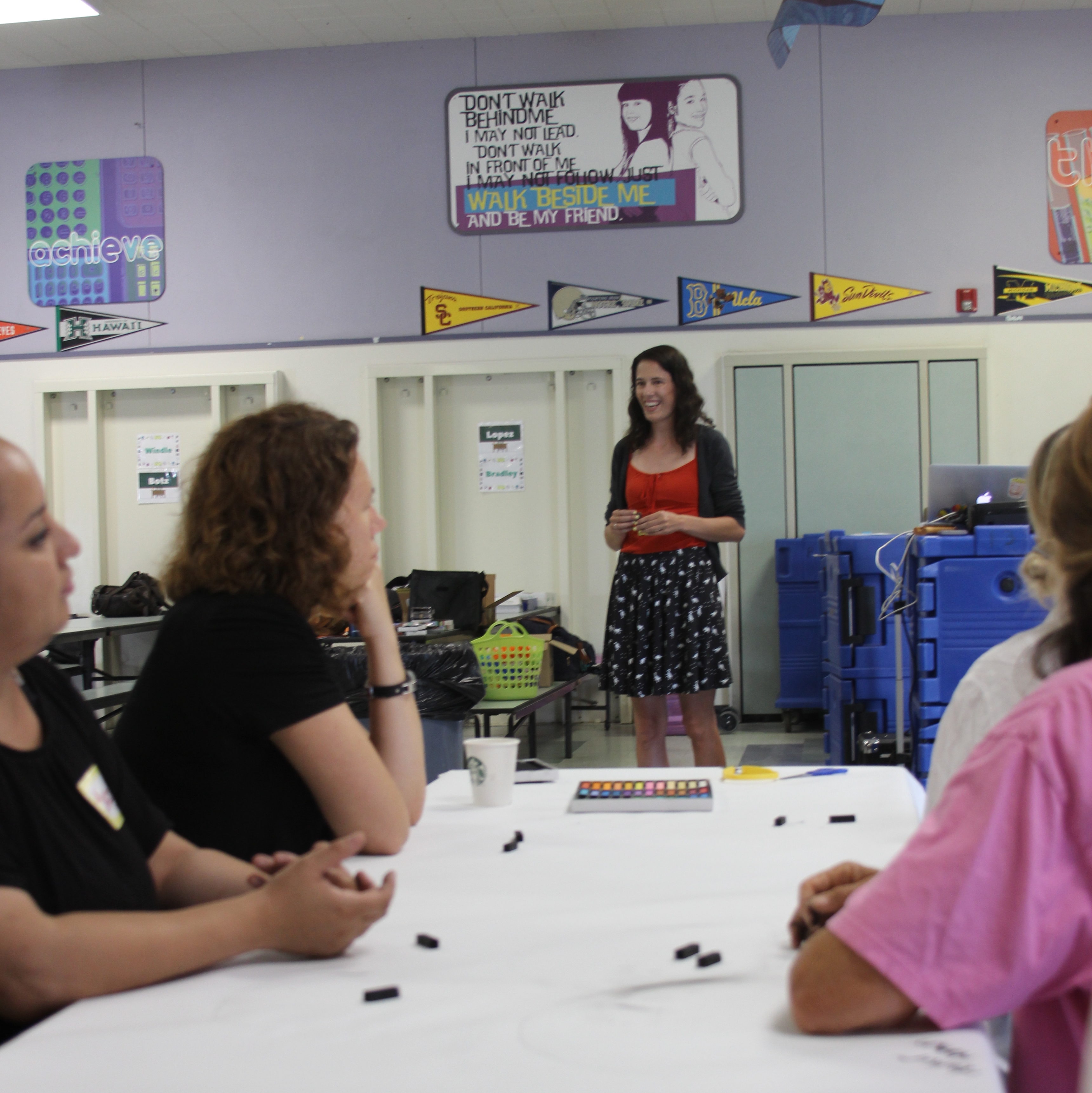Rebecca Potts is a practicing artist who currently works as a visual arts teacher in our El Segundo schools. In addition to leading students in the classroom, she facilitates art activities at our faculty professional development workshops as well as at our annual fundraiser, Express Yourself. Her energy and enthusiasm are inspiring and we wanted to take the chance to let everyone get to know her more by asking a few questions about her artwork and students.
I’m inspired by nature, my daughter, my students, and other amazing artists.
Tell us about your personal work and how it affects your teaching.
I’ve always been an artist and I remember being frustrated sometimes as a kid when the art teacher had strict assignments to complete without much freedom to make what I wanted to make. I had an amazing high school art teacher who supported me in making what I was interested in and that is the type of teacher I strive to be. I’m trying to set up my classroom and curricula and supplies so that I rarely have to tell students “no” about their ideas. So, I’m often picturing myself as a young artist when I’m thinking of how to inspire and encourage students.
This past year, I’ve been working to get back to a consistent and serious studio practice. I share my process with my students so they can understand how different artists, including the artists we study, use different techniques to create art. I also like to emphasize that I can be an artist without being naturally wonderful at drawing. Being an artist takes practice and work just like sports or any other endeavor.
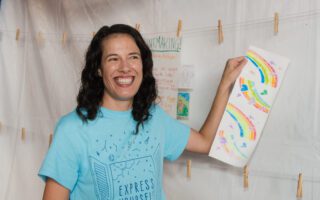
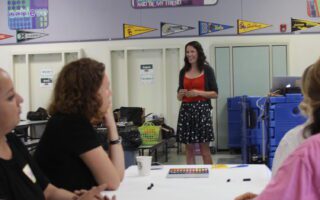
I’d like students to enjoy the process of making art while also learning to think critically, generate their own ideas, and figure out the steps needed to create those ideas.
What are some consistent sources of inspiration for you/your artwork?
My artwork has always been about land, place, and environment. For about 10 years, I’ve been focused on climate change, although that has shifted from ice to fire recently. I’m also beginning to draw connections between the land and our bodies, especially women’s bodies and the effects of motherhood. I see the ecology of the planet as closely linked to the ecology of our society and our bodies. As hate is fostered, weather becomes more dramatic, anxiety, and depression surge. It’s easy to get lost. Seeking hope and seeing all the pushback keeps me found. I look for the universal through the personal. While I do engage in politics through my work, I see beauty as an entryway to the work. Colors and shapes take on symbolic meanings, hinting at figures in the landscape. Circles become wombs and curled up children, trees are personified, fire is both powerful and dangerous, water encroaches with slowly rising seas, waves crash as emotions conflict.
I’m inspired by nature, my daughter, my students, and other amazing artists. I love searching for contemporary artists to share with students because it also helps me find inspiration.
If your students have one main takeaway from your class, what would you like it to be?
Just one? I made a shortlist of goals last summer and it’s hard to narrow it down to one. I’d like students to enjoy the process of making art while also learning to think critically, generate their own ideas, and figure out the steps needed to create those ideas. I try to teach students to persist, to fail and continue, to turn “mistakes” into part of their artwork. High on my list of goals was also making sure they encounter a range of art and artists to embrace the diversity of what art is, what art can be, and who can be an artist (hint: anyone! everyone!).
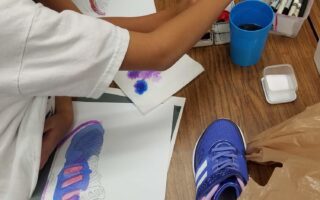
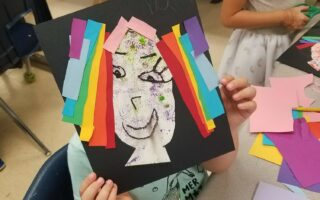
Tell us about a memorable class/student/lesson.
One that comes to mind from this fall was a fourth grade boy who I remembered from last year as often off-task and distracting to others. Those students stand out to me as people for whom I haven’t yet introduced the right materials or possibilities of ideas — they’re not yet engaged. This fall, he wasn’t very interested in sculpture, made messes with paint and didn’t take it seriously, and got frustrated with drawing. The day I introduced printmaking everything shifted. Somehow switching to drawing on styrofoam and then printing it completely engaged him. He made amazing prints and was super proud. I told him he’d found his media. I love those moments with the harder-to-reach students, but I am also so inspired by what all students can do when given materials, a little guidance, and time and space to create.
What famous person, either dead or alive, would you choose to take out for coffee?
I would love to meet Greta Thunberg. She’s such a strong young woman who’s making a huge impact on our world.
Thank you, Rebecca! Teaching artists like Rebecca are a vital part of what makes P.S. ARTS programs succeed. Support our teaching artists here.
